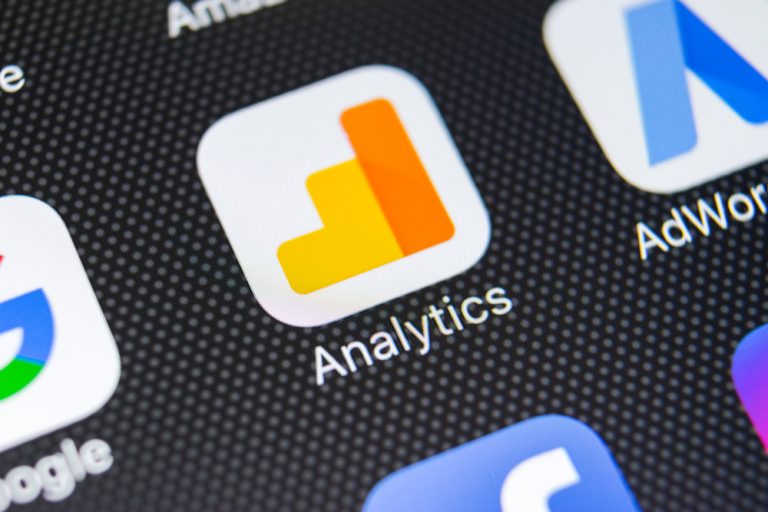This post is also available in: 日本語
Introduction

Here’s how Google Analytics works, an essential tool for website analytics and marketing.
U-TILLY will introduce the point of the acupressure point.
Blog, Media and Site management questions
In the marketing of services and products, we attract customers to our website and our home.
It is essential to promote actions such as registering and purchasing from the website, but I think various questions will arise in the operation.
- How many people are on the page in the first place?
- What kind of people are on the page?
- Which page is being viewed?
- Is the number of people who come to the page decreasing or increasing?
- Which page is more profitable?
- What is the ratio between advertising and organic?
- Is Social Networking Useful?
With Google Analytics, these questions are easy and compelling.
What is Google Analytics?

Google Analytics is a site analysis tool provided by Google.
It is familiar to marketers as GA, and is an indispensable tool at an unthinkable level.
That said, it’s a useful tool that only marketers can use, and anyone with the basics can use.
How to set up Google Analytics
The first step is to log in to Google.
You can register from the Google Analytics site. Click [Use for free of charge].
A Google account is required to register for Google Analytics.
If you don’t have a Google account, you can start by creating one.す。

Google Analytics Application
After you log in, the following screen appears. The steps for using Google Analytics are shown. Click [Register] on the right side of the screen.

- Sign up for Google Analytics: Input required
- Add a tracking code: Place a tag on your home page
- Find out more about your audience: Get started here.
Enter the basic information on the screen after the transition.
- To track: Choose between a website or app* .
- Account Name: Enter any account that knows the service name
- Property: Enter the name of the website
*Apps will be taken over by FireBase, a service dedicated to app tracking.
It is a structure in which properties are stored within accounts. It is common to have more than one property. For example, in the account called Utility, there are often two properties, the Japanese version of Utility and the English version of Utility.
If you don’t select Japan as the time zone of the report, you should be careful because the data will be complicated.
When you finish entering all items, click [Get Tracking ID] at the bottom.
Installation of a tracking code
If you agree to the terms of use, we will set up a tracking code.
![]()
The alphanumeric characters in the [UA-XXXXXXXX] line will be your tracking ID.
The tracking code is <! — Global site tag (gtag.js) – Google Analytics –> in the middle of the screen.
The script begins with.
Place between <head></head>
Copy and paste the copied tracking code into the head element of the HTML file.
Specifically, they are placed at <head> to </ head> of the site, but the recommended place is before the end tag </ head>.
Operation check
Check the operation after the installation is completed.
When the status of the screen where the tracking code was installed shows “Receiving traffic data”, it succeeded.

If the operation cannot be confirmed properly, check if the tag is missing (If you accidentally delete something, etc.) or if it is properly placed between the heads.
Most likely it will fall into one of these two categories.
How To Use Google Analytics
Once you’re done, we’ll show you how to use Google Analytics in general.
Google Analytics has hundreds of features, large and small, but you don’t have to use all of them (Of course, it’s a good assumption to use as much as possible.).
How to read the screen
Google Analytics is composed of “Report”.
Reports can be viewed in various ways, but the layout of the analytics is simply to select a report in the report selection area of the left menu and view it in the display area on the right.

So, You mainly use the menu on the left.
The following is a brief summary of the menu.
- Audience: What kind of users
- Customer: Where are you from?
- Action: What page did you see?
- Conversion: What kind of results do you get from that?
The first three most frequently used are “attracting customers” “audience” and “behavior”.
(Conversion is also an advanced version.)
I mainly use “audience” “attracting customers” “behavior”!
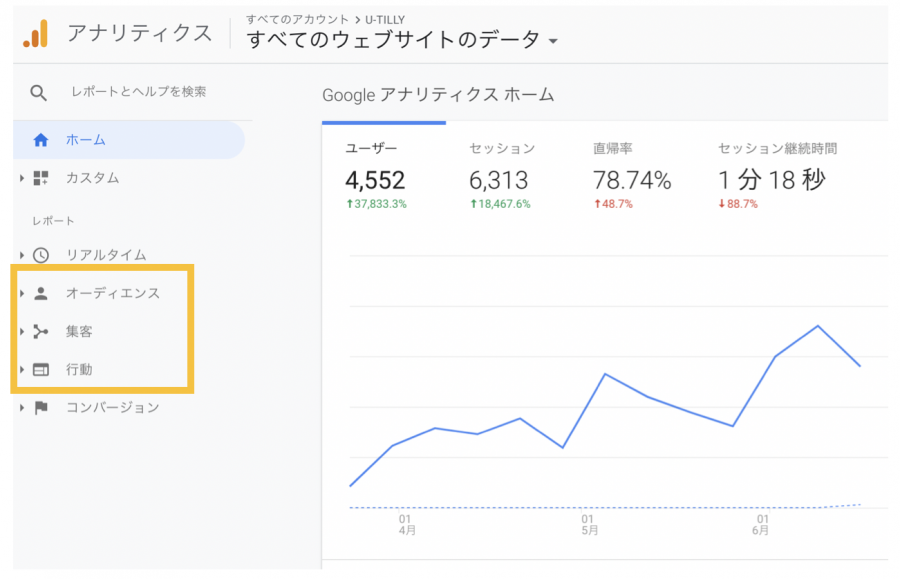
Definition of words
Check the definition of the word before actually looking inside.
- Sessions — Number of times the site is accessed (It will cut in 30 minutes.)
- Users — Number of users that visited the site (for two years.)
- Page Views: Number of pages viewed during the period
Frequently Used Conventions
Here are some of the most useful features of Google Analytics.
User Explorer
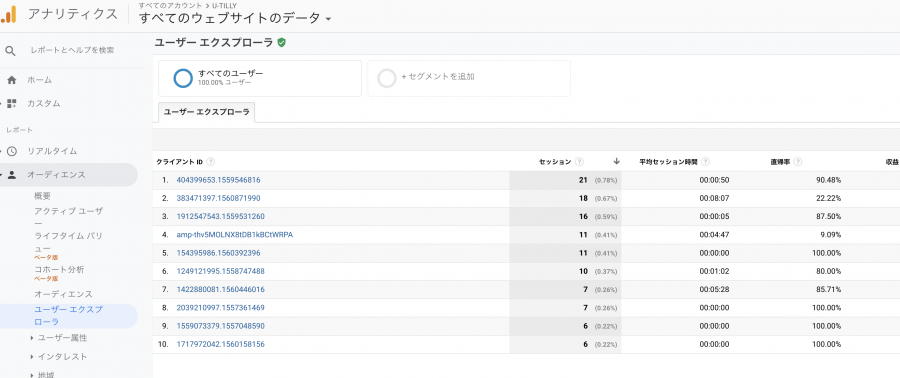
Available in Audience > User Explorer.
User Explorer is, in a nutshell, a log of individual users.
You can see the data of each minimum granularity, such as when a certain user comes from, where they come from, and which page they browse.
- Client ID: Unique ID assigned to the user
Try clicking the client ID.
You can then closely check what the client ID is doing, as follows:.
Of course, just looking at this client ID doesn’t tell you that “Who is that person in real life?”. It is just an activity log on the site.

Segment function
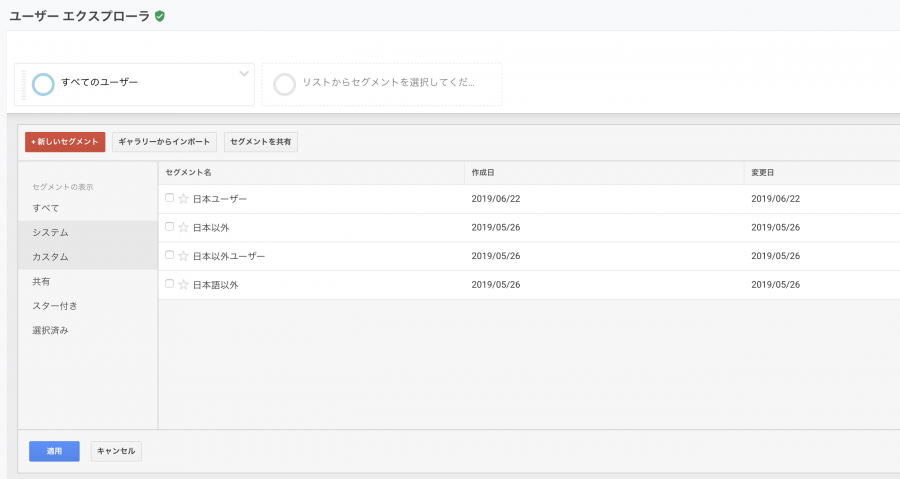
You can use any report that is marked “+ Add Segment”.
The second commonly used feature is the segment feature. You can configure segment functionality from any report. You can set custom segments from [New Segment].
This allows you to analyze various reports in any segment.
For example, below, we created each segment with the intention of analyzing the trend of users accessing from Japan and those accessing from outside Japan.
Benchmark
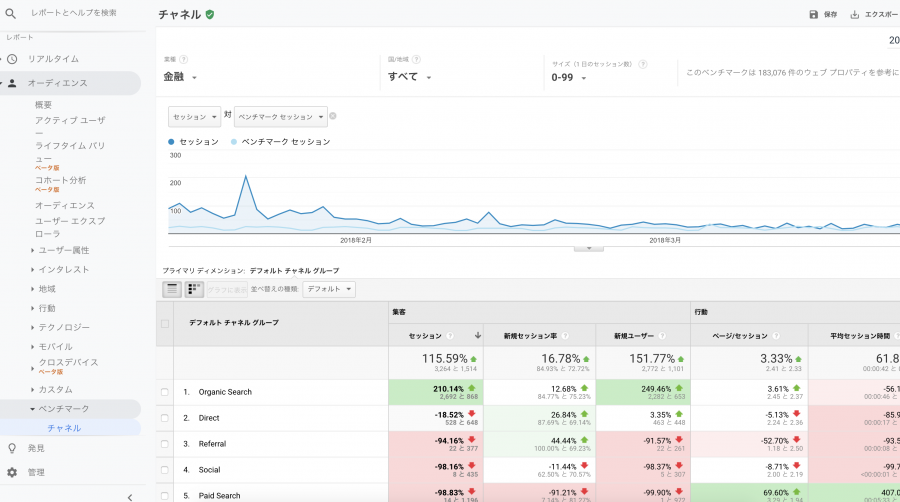
Audience > Benchmarks
Benchmarking gives you a good or bad idea of whether your site is better or worse than a benchmarking site in the same category, country, or session size.
For example, you can use it as a health check of your site to see if you’re spiking when you see big industry news, if you’re noticeably inferior depending on the day of the week or time of day, or if you’re not good at attracting customers.
Referrer / Media
Accessible from Customers > All Traffic > Readers/Media.
Here you can visualize the media you were on before you visited the site.

The channel sections are as follows:.
- direct: Enter URL directly, Boucuma, etc.
- Referral via external site link
- organic search: natural search
- PaidSearch: Search Ads (SEM)
- Display: Display ads
- Social: Social Media
- email: email magazine
Reference:
There is a tool called “SocialDog” which aims to increase the number of customers on SNS.
You can find an introduction to SocialDog in the Utilities section.
Site Content
Actions > Site Content > All Pages
Site content can be analyzed based on the site’s PV, including which content on the site is most viewed.
You can check not only the number of page views, but also the length of time the page stays and the rate of return.

Site operator
Action > Site Administrator
If you’re making money from ads on Google AdSense, this is a must-read report. It is assumed that you have registered separately in Google AdSense. You can also view the AdSense Report by linking it with your AdSense account.
This is where you can see the most profitable sites.

Reference: Web tests (Behavior > Web Test)
If you are doing the AB test on the site, you can check from the web test. This AB test assumes Google optimization. Check out the full article on Google Optimization.
And finally,
This concludes the “All you have to do is press down here! How Do I Use Google Analytics?” article. Google Analytics is a really deep service, so I think we should gradually increase the functions we can use.
I will be adding Google Analytics related articles to the utility as needed.
If you’d like to know more about the must-have tools for marketing, including Google Analytics, check out this post.


